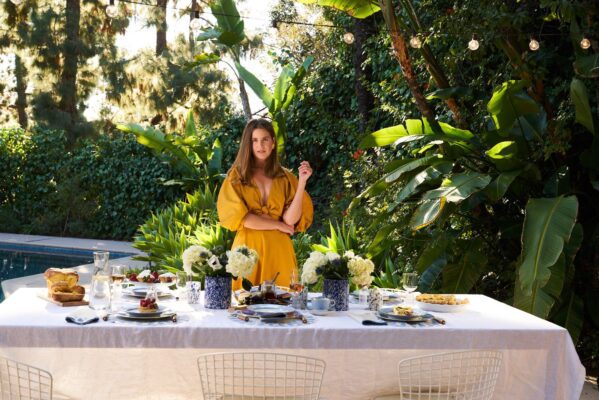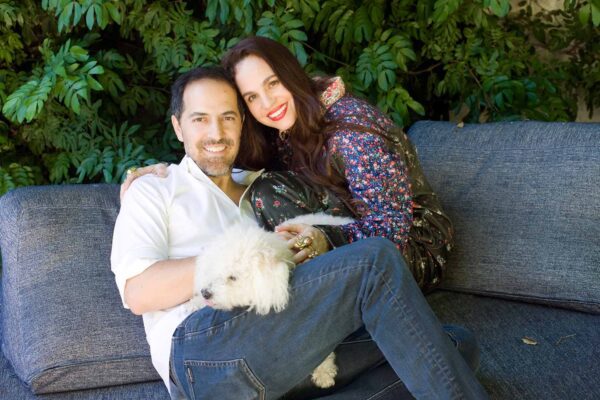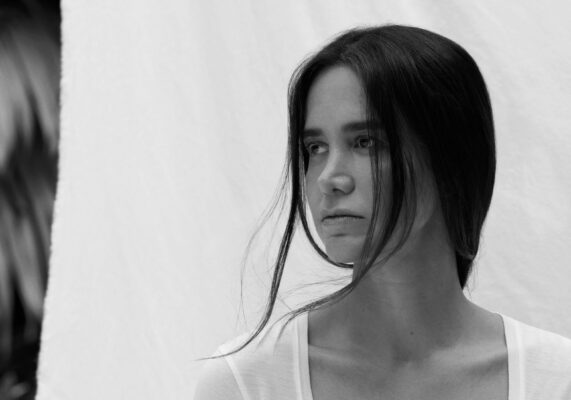
COFFEE WITH
ANA KHOURI: “THIS IS NOT ABOUT BUILDING A BRAND, THIS IS AN ARTISTIC VIEW ON THINGS”
Name: Ana Khouri
Profession: Artist
Nationality: Brazilian
Zodiac sign:
Instagram: @anakhouri
LATINNESS: Ana, as an artist and designer, you have such a unique perspective and sensibility in design, which makes us wonder what your upbringing was like. Were you raised in a creative environment?
ANA: There are two great things about my upbringing that always come to mind, and I think they really stayed with me. One of them is that I grew up in this natural environment. Until I was 10, I was brought up in Brazil, near our farm. I was born in the south of Brazil, in Londrina, and my parents wanted us to grow up near our farm, to participate in nature. I would always go to the farm Friday after school and stay until Monday morning because it was 20 minutes from school. It was great being in that environment.
My house was in front of the lake, so we were always outside swimming, horseback riding, playing polo and skiing. It was really, really nice. My mom is a lawyer, but she’s also a pianist, and was always into art, so I had art history lessons since I was a kid. My upbringing was a lot of nature and a lot of art.
I was raised to look at the world in a similar way to when you learn about art– to appreciate it. To communicate with and understand the world, to respect nature and to have sensibility. You know, when you grow and you start understanding a tree and the seasons and how it changes, and it takes time for something to grow. You plant and you grow and you catch and you see how things change, in horses and animals, just like you understand music and paintings. I started painting really early on, and that’s why I went to art school because I was very much into the arts.
LATINNESS: You grew up between multiple cities. How did this influence your creative path?
ANA: When I was 10, I moved to the U.S. with my whole family– to Key Biscayne, in Miami. Then when I was 15, I moved back to Brazil, to Sao Paulo. We always had an apartment in Sao Paulo, so I was there a lot and already had friends. It wasn’t like moving to a new city, it was very easy for us. The school I went to in Sao Paulo is called FAAP (Fundação Armando Alvares Penteado), and it was known at the time as the best fine arts school in Latin America.
The interesting thing is, it’s a five year program, and of those five years, you can’t choose a major for four years. I specialized in sculpture, but it’s only in the last year that you’re trained as a sculptor. In the first four years, you train in photography, painting… you have to study everything from art history to every kind of art, so you kind of have things like installations, painting, drawings, ceramics, sculptures, anything you can imagine. Then in the last year, you specialize in what you want. For me, it was sculpture. I grew up in this environment, and it’s something that was very much inherited from my parents. After I graduated from art school, I came back to New York.


LATINNESS: So first painting as a child, then sculpting… When did jewelry design come into the picture?
ANA: When I was still in art school, I was one of three students chosen to do this art show. I did these huge sculptures in metal, and had these naked women wearing them. The women were naked and all they were wearing were these huge sculptures. It was kind of like this dialogue between feminine and masculine, so hard and light, and something that’s cool and warm, so the skin versus the harshness of the material. Feminine, masculine and all this juxtaposition of things.
Someone came and said: “Ana, I think this is amazing and I really want you to adapt these pieces into smaller scales. I want to wear them as you’re molding it to the body of these women, but I want you to make them smaller so I can use them in my day to day.” I was like, “Well, but that’s jewelry. This is not supposed to be something that has a functionality to it, it’s art!” And she insisted: “Yeah, but I want to buy your work, and you’re still in school, so make it work.” I found this jeweler, and told him: “I don’t know anything about jewelry. How could I make this work? How can I make this on a smaller scale? How do I add functionality, but not compromise the work?” He started teaching me, and I would sit on the bench, trying to make it work, adding a hinge, but trying not to compromise the work, and I fell in love with it. I seriously fell in love with it there in that project.
The challenge of doing it was something that for me was number one. After that, I did it, sold it to her and it worked. I was just amazed by what I could do with the material and by using fire. I used silver not gold, and with what I could do with silver, I was like: “Whoa! What about gold? Let’s just dream big!” So the jeweler was like: “I can teach you.”
I learned from him, and now he works with me in Brazil. I don’t produce in Brazil. I produce here (New York) and in Paris, but he has worked with me from Brazil for over 20 years now because I have clients there who sometimes need to adjust or fix something.
I just love it when I’m there, working and sitting by the bench with him. When I started, I was still in school and needed a year to finalize. During that year, I just sat on the bench with him and started learning and learning and learning, and I just fell in love with it. The funny thing is, I never planned any of this. It was just something I fell in love with, and I started making jewelry pieces, but as an artist, I still start from sculpture.
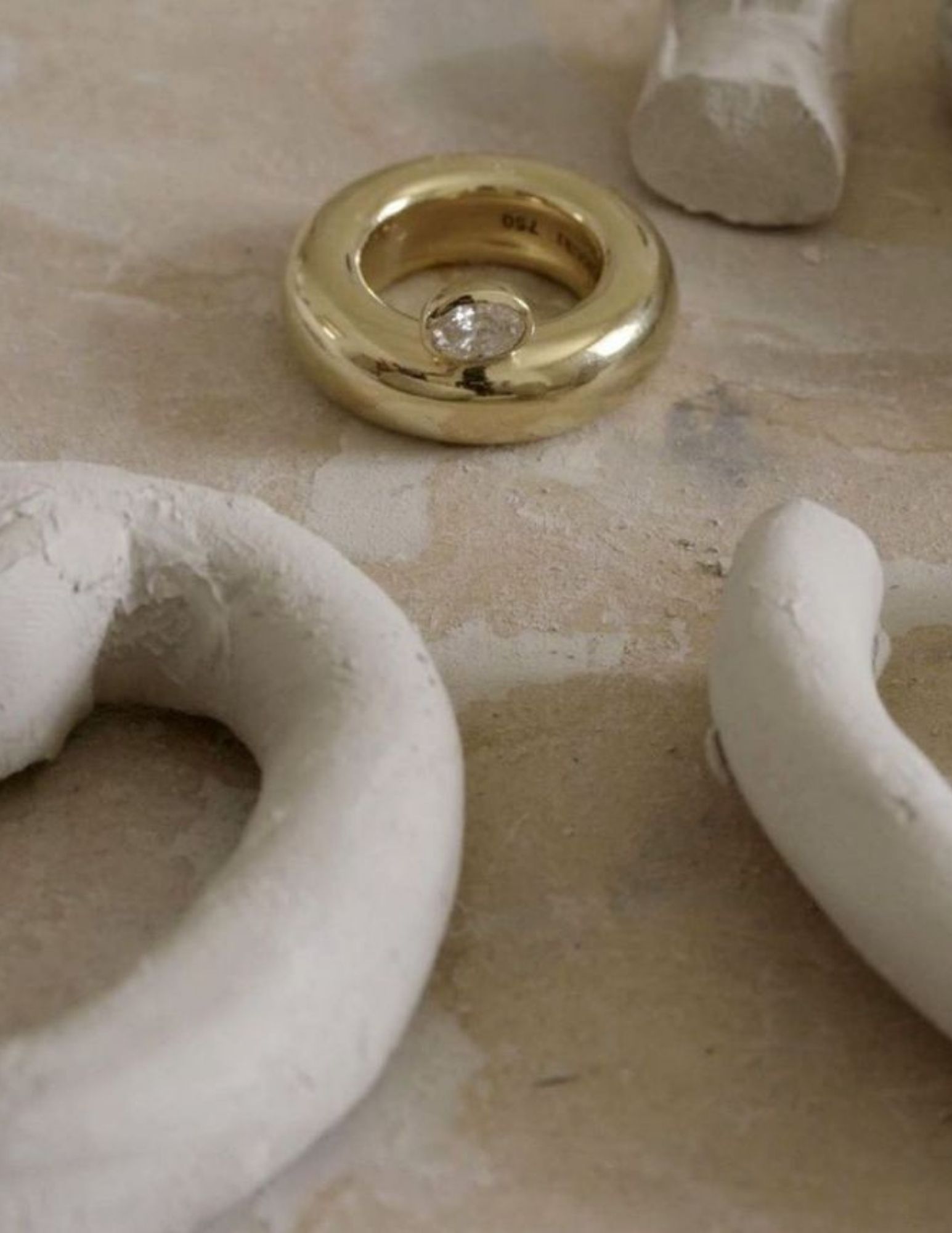

LATINNESS: So what’s your process like?
ANA: I start by sculpting, and then I have the shape and the form I want. So, even with the exhibitions, at Sotheby’s, at Phillips, at all the auction houses, whenever I make my exhibitions, we show the sculptures near the work, like how it starts and where it starts from. I don’t start by drawing or anything. I start with sculpting, then I get to the shape I want to work with, and then I go for the jewelry.

LATINNESS: So you went from silver to gold. When did you start working with diamonds?
ANA: Oh, right after. I didn’t work on the silver for long. When I launched my brand, I didn’t have silver, it was just in the beginning when I never thought of doing this. To give you an idea, this was around 2002, and I launched my brand in 2013.
I really took my time because I didn’t dream of being a jewelry designer. My dream was to be a sculptor. I never plan anything. When you plan, God laughs, you know? I took my time, and I was very into the thought: “Why would I make a brand? There are so many brands.” I really took my time. It was over 10 years of sculpting and making jewelry and sculpting and making jewelry and doing what I love.
Everyone always asks: “Oh, Ana, what’s the secret of success? What should I do? How do I sell? Where do I find clients?” I’m always like: “Listen, your work will bring you clients. Focus on your work. If you focus on your work, if you have good work, things will come.” I know showrooms hate me when I say this, but it’s true. You focus on your work. You do the best. It took me 10 years to start selling my work.
LATINNESS: It’s impressive what you’ve accomplished in eight years. Your pieces have graced the red carpet on numerous occasions competing with many historic jewelry houses.
ANA: Yeah, but you know, it’s not that I started in 2013. I started even before. I grew up with this amazing education thanks to my parents. I grew up sculpting, drawing, and doing this. It’s not like I woke up one day in 2013 and said, ‘I want a brand!’ and hired a press agency and a showroom, or said I’m going to do this after a trip to India. I have nothing against that, and I know that there are a lot of commercial (designers), and I’m not degrading anything, but this is not about building a brand. This is an artistic view on things, it’s totally different.


LATINNESS: Despite not building a brand as such, the fashion industry has definitely embraced your work. How have you managed this as an artist?
ANA: At a certain point, when I started, Barneys and Net-A-Porter came up to me and were like, I really want it, I really want it. When Holly (Rogers) first saw me, she was still with Net-A-Porter at the time, we were at a restaurant in Paris, and she said: “I want to come to your show.” But I didn’t have a showroom, I had an apartment there in Paris. She came by, and I put the jewelry on the bed. She was like: “We want to have it on Net-A-Porter”, and I was like: “OK, but I will deliver when I deliver. When I have work.” She told me about the seasons, but I don’t work like that, and she finally agreed. Barneys was the same thing. I can’t remember who the buyer was, but I told them ‘I’m going to deliver when I deliver. I don’t follow seasons, I don’t do collections. I make editions.’ And they said OK.
So you know, you set your grounds and it’s amazing. At the time, it was difficult because then I said yes to these stores. There weren’t a lot because I never had more than like eight stores at one time, but it got me to a point where I wasn’t happy where I was, I was at too many stores for the way I work. In 2018, I started reducing, but it was still too much. I didn’t want to be on e-commerce or so many stores. I wanted to reduce it.
Again, people told me I was crazy, but I was just following my heart like I have since day one. I was like, this is not where my heart is, and maybe I’m going to like, fuck this up ( I’m sorry for the language). Maybe it’s going to go all wrong, but that’s what I want to do. I want to keep it artistic. I felt like I was maybe losing myself. I don’t know. I had this weird thing in my chest.
I walked out of Barneys before all that happened, thank God. I walked out of Net-A-Porter. I walked out of a lot of e-commerce platforms in 2019, before COVID, which was amazing. I kept Matches and I kept Le Bon Marché and The Row.
Since day one The Row was amazing because they told me: “Ana, what you do is art. We only sell vintage jewelry now.” At the time they had Sidney Garber, who I love, until they didn’t have her anymore, and they were like we don’t have anyone contemporary, you would be the only one. We want your sculptures, and want to dedicate a wall in the London store that was just opening in 2019. You would walk in the London store– and still today– on the right there is a John Chamberlain, and on the left there’s a wall dedicated to Ana Khouri. In their store in Los Angeles, they have all my sculptures. They really treated this like art.
Last year, finally, we got to a point where, little by little, we rearranged, and now we’re only fine jewelry, which is editions, at The Row or at our by appointment space in New York, here at 68th street, or high jewelry at Sotheby’s or here. We had an exhibition at Sotheby’s this year in November, and we’re having exhibitions at museums next year. We’re having exhibitions at auction houses, so I’m very glad.
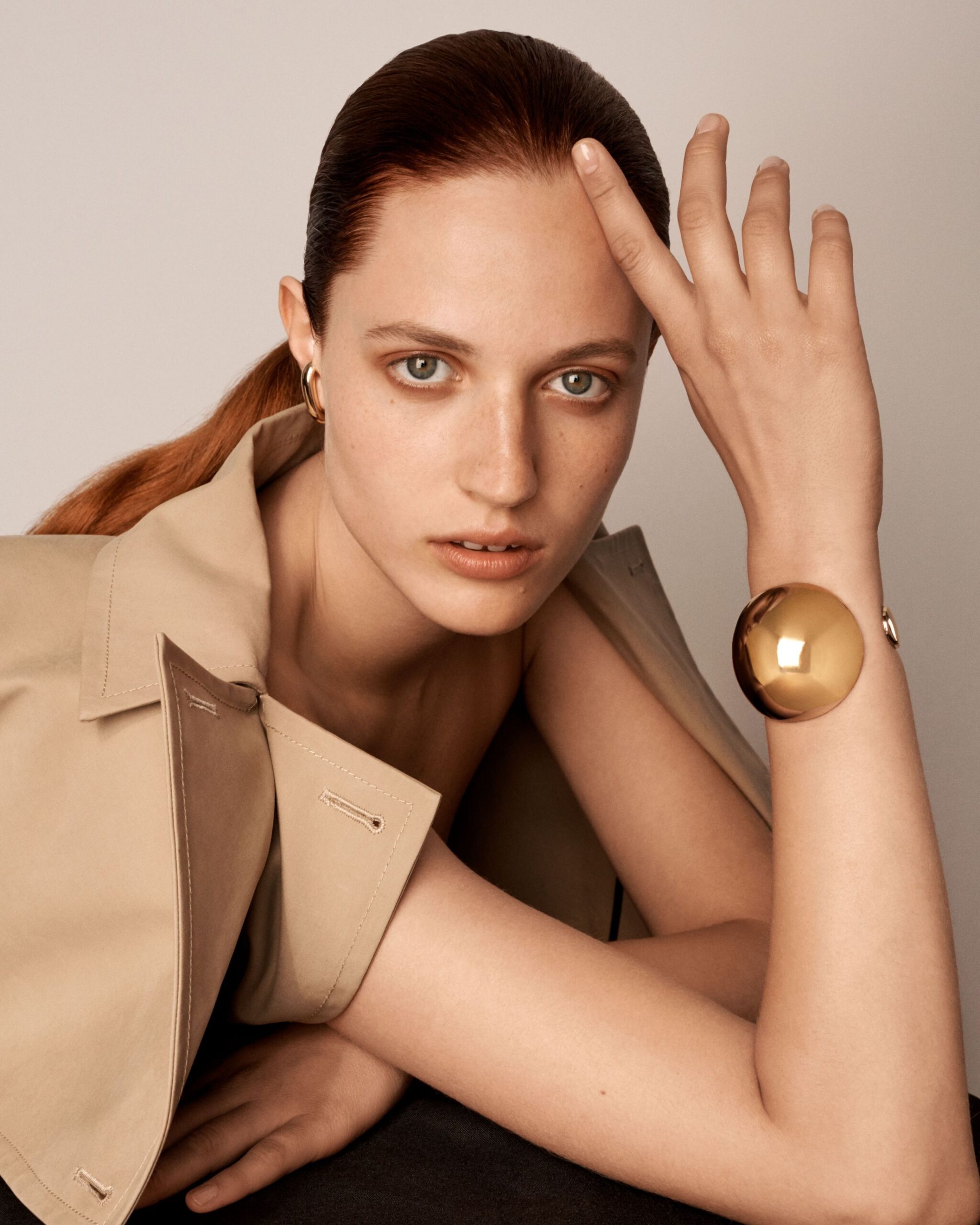

LATINNESS: Listening to you speak, it seems as though your upbringing in nature made you more attuned to your instincts and following your gut, much more than others in the industry.
ANA: I feel it, it’s so weird. Sometimes it’s so bad, I have to say. Sometimes it leads you to a better place, but sometimes it just gives you turmoil. You know there’s something wrong, but you’re like what is it?
You have to realize, and you have to have a straight position. Am I here to create a brand? Am I here doing art? So I realized that early on. I knew that perhaps that would lead me to a huge distribution, and this is not my plan.
You have to be really clear on what you want. That’s how it got me competing with these big houses, I think, because I chose where I wanted to be presented. Museums ended up choosing me, and auction houses ended up choosing me. I was never part of couture, so I was never part of so many stories. I knew what I was losing, and maybe I gained other things. It’s a really difficult path, like one out of a thousand make it.


LATINNESS: What’s your first memory with jewelry?
ANA: With my mom, getting dressed, for sure. She would put on jewelry first. She was always so sensitive to jewelry.
LATINNESS: It holds more meaning in a way…
ANA: I mean, for her it did. I grew up watching her get dressed, and I was a tomboy, I still am, kind of. I have two brothers, so I was always outside, riding horses, whatever, but when I would see my mom get dressed, I was in love. She would just choose the jewelry first, always, and that gave it so much importance. I only realized that after I started working with jewelry.
LATINNESS: Where do you find inspiration for your editions?
ANA: It’s all inside. If you go to my website’s philosophy you will see that we present once a year at the Musée des Arts Décoratifs in Paris. Before the Musée we would also present in Paris once a year. It’s just easier there because I get everyone and we produce there, we don’t have to ship the jewelry here.
There is not always the theme of a collection, but always what inspires me. There’s always a text that I write, and it’s always like time, essence and whatever it is, and it’s always the theme of the installation. That is the text of where the inspiration comes from, and it’s always like, you’re turning your eyes inward.
For me, the inspiration comes when I’m very calm, and sometimes I write about how to get in that calm state, how to hear, how to be able to hear. For me, it’s not about anything that is outside, because how you, me and Kelly, perceive this conversation that we’re having now, it’s totally different, although we’re all experiencing the same thing at the same time. So actually, it’s not something that’s outside of us. It’s always inside.


LATINNESS: It’s all relative, as the saying goes.
ANA: We have to be able to calm our minds, calm ourselves to get to a space where we can hear our thoughts and our emotions, and much more than our thoughts, because we can’t really choose our thoughts. Yet if we’re calm enough, it’s like you can’t really choose what you feel, but you can choose how you react to whatever you’re feeling.
You also can’t choose your state, but you can choose to align your thoughts in a way that brings you calmness or to just be present. When I get into a state of calmness, I can hear what’s inside myself, and I can create. It’s much more about getting into a state of calmness and quiet inside, and I get into the state whenever I’m close or in nature.
That’s why I moved uptown, and I’m closer to the park, because for me, being in nature is very, very important. At least once a day, I go to the park. I live in a very harsh city, but if I can’t be in control, or at least hearing the inside, I can’t create.
LATINNESS: Do you meditate?
ANA: Yoga and meditation.


LATINNESS: It’s a very honest answer, and surprisingly one you don’t hear often.
ANA: It’s something that serves me in my life and not only in work, and I found that whenever I started, I really could hear my thoughts. This is the only way I can create, because for you to create something that really doesn’t exist out there, and that’s why I I think that’s why I’m here for my work. I want to create things that haven’t been seen before– shapes, forms and ways of wearing jewelry, combining good design with amazing stones, ethically and responsibly sourced using fair mined gold.
You can see great designs in fantasy jewelry because people are more free to create, but you don’t see that much great design in high jewelry. You have that pressure because you have to sell it, so it’s a bit less free.
I wanted to bring great design to high jewelry, bring great design to great pieces. You can’t create something that is unique and that comes from within if you’re not quiet because then it’s not coming from you, you’re just copying something that’s out there.



